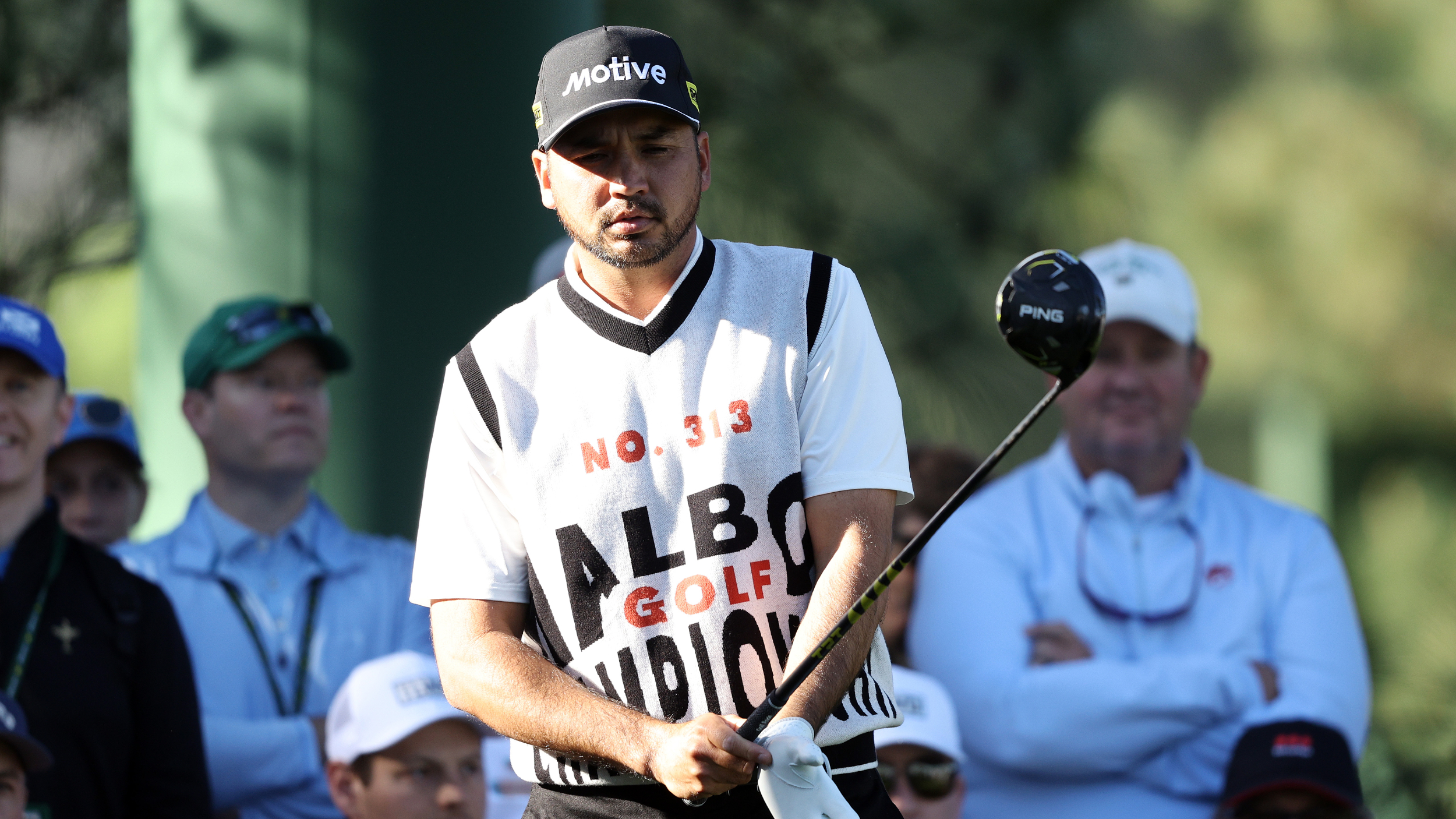The Big Junior Golf Survey: What Do Young Players Think About Dress Codes, Adult Members, How They’re Treated, Mobile Phones And More…
We asked 45 juniors how they feel about various aspects of golf club life, from dress codes and etiquette to how they’re treated by adults


Juniors are absolutely essential to the success of the game on a global scale. At golf clubs, they should be welcomed with open arms, encouraged and respected. Many facilities do a fantastic job of nurturing and motivating young golfers, and countless clubs have schemes in place – often run by passionate members who are volunteers – that help juniors learn, develop, have fun and fall in love with the game. From taster sessions to free lessons and, in some cases, complimentary junior memberships – as at Seaton Carew in County Durham – the work being done in this realm is commendable.
However, it’s not all positive. The old adage that ‘children should be seen and not heard’ is sometimes used as a metaphorical stick to beat juniors with. On occasion, it can feel like juniors are treated like second-class citizens despite having as much right as anyone else to have a golf club membership (or be nomadic golfers). Of course, there’s a learning curve and juniors should be told when they’re not conducting themselves appropriately, but sometimes it can be done in the wrong way.
Whatever their experiences, it’s probably fair to say that juniors’ voices and opinions on the game aren’t heard quite as loudly at golf clubs as they could be. There are understandable reasons for this, but as the lifeblood of the sport, it surely makes sense to canvass their views from time to time. That’s exactly what we’ve done in this junior golf survey.
To gather feedback, we produced a questionnaire and enlisted the help of Cameron and Jasmine Davies, two golf-obsessed junior club members who are 12 and 14 respectively. Jasmine and Cameron play their golf at West Herts and Batchworth Park Golf Clubs and are so passionate about the sport they’ve created a YouTube channel called Junior Golf HQ, which features videos on UK courses, overseas destinations, tips and more. They want to inspire fellow juniors and also some adults along the way.
The siblings are both members of two golf clubs, so they come into contact with a number of junior golfers each week. This, coupled with their love of the game and enthusiasm for engaging with fellow golfing youngsters, made them the perfect duo to set about getting survey responses. So, what were the findings?

Jasmine and Cameron Davies, 14 and 12 respectively, have their own YouTube Channel
INTERESTING INSIGHT
The survey was put to 45 junior members between the ages of eight and 18, who shared some very interesting insight into club life. But did any themes emerge and what learnings can we take from the questionnaire responses?
The first thing to note is that all but four of the respondents have a parent or parents who play golf. The logical takeaway here is that family members have played a significant part in nurturing an interest and offering guidance and encouragement along the way. This is, of course, no surprise – parents generally play a huge role in stoking the flames of intrigue when it comes to any hobby or pastime.
Subscribe to the Golf Monthly newsletter to stay up to date with all the latest tour news, equipment news, reviews, head-to-heads and buyer’s guides from our team of experienced experts.
I’d suggest the vast majority of junior golfers have at least one parent who plays the game, given that other ways into the sport often come later in life. For example, many people take up the game through work for business purposes and others transition from other sports, perhaps as a result of an injury or a desire to keep active without the intensity that comes with the likes of football and rugby.
What is interesting, however, is that 18 of the 45 respondents didn’t have the opportunity to try golf through school (and this number is higher across UK schools in general). What this means is that if a child doesn’t have a parent who plays golf, they’re unlikely to find their way to full-time club membership.
The Golf Foundation does excellent work in bringing golf to school children – this year, school and community programmes supported and delivered by the Golf Foundation have reached 244,482 participants. What’s more, the Unleash Your Drive programme, launched in September 2023, has had nearly 1,000 enquiries from schools, with over 400 now delivering the 6-week programme.
Even so, until golf is put on a level footing with the likes of football, rugby and cricket – admittedly it’s more challenging logistically – exposure will continue to be an issue.

The Golf Foundation brings the sport into schools
When it comes to what they love and hate about the sport, it’s perhaps unsurprising that juniors feel exactly the same way about the game as young adults and those who have been playing most of their lives – a reflection of golf’s universal joys and frustrations.
Reading the responses to the question ‘what’s the best thing about playing golf’ really brings home just how much the game has to offer. For some juniors, it’s all about spending time with friends and family. Others love the competition and the process of trying to improve, while more still selected hitting great shots – whether a long tee shot or holing a 15-footer – as the main reason they continue to come back. Among the other responses were playing and exploring new courses, meeting people, getting exercise, being outside and getting rid of stress. It’s comforting to know golf’s main selling points are acknowledged and shared across all age ranges.
It’s a similar story with dislikes. Hitting some variation of poor shots was the most popular answer to the ‘what’s the worst thing about playing golf’ questions – there were numerous votes for duffs, shanks, slices and missing the ball, while some juniors don’t like how annoyed the game can make them when things aren’t going well. There were also multiple votes for the weather – completely understandable given what we’ve experienced in the UK this year – and some lamented the fact they don’t have more juniors to play with at their home club.
RETENTION
When it comes to junior golf, retention is absolutely crucial. Getting a youngster through the door is one thing; encouraging them to stay as a long-term member is another matter altogether. Each generation prioritises different things and clubs have to understand what’s important to juniors if they want a healthy number of young golfers. On the whole, feedback from the survey was largely positive around how juniors have been made to feel, and strides have definitely been made over the last few years in this regard. However, there are clearly issues to resolve around dress codes and tee time availability.
Encouragingly, 42 of the 45 respondents said they felt welcome and like a valuable member of their club. Honestly, I expected this figure to be far lower given what myself and my friends experienced when we started playing golf as youngsters. Having such an overwhelmingly positive response to this key question proves clubs – the ones represented in the survey, at least – are really prioritising the junior golf experience.
However, the situation isn’t perfect. More than 25% said an adult member had made them feel unwelcome or like they don’t belong. While that’s a minority of respondents, it’s concerning that 12 juniors replied ‘yes’ to this question. That’s 12 more than it should ideally be. Some of the feedback doesn’t paint a great picture, either.

It's crucial to foster a welcoming environment
“Older members are very dismissive of young players on the course. They will hold you up and sometimes be rude. It’s really annoying as me and my friends are all low-single-figure players and understand how to behave. Older members would never let juniors through on the course,” said one 12-year-old. “Sometimes people aren’t nice to juniors at my course and just look at me like I’m about to do something silly,” added a 13-year-old. “Once I was playing with a nasty woman who kept making rude comments even though she was worse than me,” said another 13-year-old.
These comments don’t make for great reading. The fact only three respondents said they don’t feel welcome at the club, but 12 said an adult member had made them feel like they don’t belong, suggests some individuals are undoing the good work done by clubs, volunteers and other members in fostering an inclusive culture. Of course, each situation has to be taken on its own merit and it’s naive to think all juniors behave impeccably all the time, but this feedback does nothing to dispel the theory that juniors aren’t treated as well as they could be at some golf clubs, particularly by older members.
DRESS CODES
Dress codes are a key topic when it comes to the younger generation. While only three of the 45 said they don’t understand why golf had a dress code, some 19 feel it should be relaxed in some capacity. No one was advocating for jeans and football shirts, but some mooted the possibility of less formal attire during casual rounds.
It was also very interesting to note the responses to the question: ‘Do you think non-golf-playing friends would give golf a go if they could wear what they wanted on the course?’ Some 26 juniors answered ‘yes’ or ‘strong yes’, so it’s clear dress codes do present a barrier to participation. “People think golf is really uncool, mainly due to the clothes you have to wear,” said one reply. “All my friends at school think it’s weird that you have to wear a shirt and smart trousers and hats aren’t allowed in the clubhouse. They say golf is for old people,” read another.
Golf is a traditional game and dress codes certainly have a place, but evolution is part and parcel of life. When potential life-long club members are turned away from the game because they don’t want to wear traditional golfing attire, we’d be foolish not to acknowledge and respond to that.
Nowadays on tour, you see an increasing number of players wearing golf joggers, hoodies and three-quarter-length trousers. Brands like Malbon are bringing street style to the fairways – remember Jason Day’s ‘controversial’ jumper at The Masters? – and many golf shoes are more trainer-like than ever before. Golf fashion is moving on, but it can be done in a respectful and tasteful way – we don’t have to completely disregard the principles that have defined golf for so long.

Jason Day wearing a Malbon vest at The Masters
Many youngsters want to wear casual, comfortable and cool clothing (this can still be smart) and some clubs need to be more cognizant of that. I’m not suggesting all facilities should follow the example of Bristol Golf Club, which recently scrapped dress codes entirely, but there is more work to be done in this area.
Look at mobile phones as an example of evolution. Not long ago, there were strict rules around their use – not in the clubhouse, only in the car park and so on. Now they’re used on the course as GPS devices, electronic scorecards and so on, and in the clubhouse to reply to messages, check scores and more. Only 13 of the survey respondents aren’t permitted to use their phone on the course and in the clubhouse – a number that would have been far higher even five years ago.
CONCLUSIONS
The other area I wanted to explore as part of the survey was access to tee times. I’ve long felt juniors should have the same access as adult members – even if they might not pay as much in memberships – because of the message it sends about egalitarianism. In my view, no member is more important than anyone else.
Of the 45 respondents, 31 said tee time access was restricted for juniors at their clubs, with many not allowed to play on Saturday mornings. Interestingly, though, only 14 youngsters felt this wasn’t fair – a number I expected to be higher.
All in all, most juniors who answered the questionnaire seem content with life at the golf club. The fact so many answered ‘yes’ or ‘strong yes’ to ‘do you feel welcomed at your golf club and like a valued member’ is heartening, as a sense of belonging and community is so important to fostering long-term interest in the sport. Unfortunately, instances of adult members speaking down to juniors is still a theme.

Numerous respondents made comments about the adults putting more effort into engaging with junior members, and this is clearly important to young golfers. They don’t just want to play with fellow juniors; they want to interact with adult members too. While being respectful of the rules, a lot of youngsters aren’t fully on board with their club’s dress code and feel more of their friends would try the sport if they had more say over their clothing choices. This is something I feel needs to be taken seriously.
But it’s encouraging to see just how passionate these juniors are about the game. They’ve clearly been gripped by the golfing bug and love spending time with friends and family on the course. Hopefully they’ll be golfers for life and help introduce more youngsters to the sport along the way – something that’s absolutely essential to continued growth.
The survey questions
– What is your age?
– Are you a member of a golf club?
– What’s the best thing about playing golf?
– What’s the worst thing about playing golf?
– Do one or more of your parents play golf?
– Do you understand why golf has a dress code?
– Referring to the above question, do you think it should be relaxed/changed?
– Do you think non-golf-playing friends would give golf a go if they could wear what they wanted on the course?
– Do you feel welcome at your golf club and like a valued part of the club?
– Have any adult members ever made you feel unwelcome/like you don’t belong?
– Have you ever had the opportunity to play golf at school or through school?
– At your club, are you only allowed to play the course(s) at specific times?
– Referring to the above question, is this fair?
– Are you allowed to use your mobile phone in the clubhouse and on the course?
– Referring to the above question, should you be able to use your mobile phone wherever you are at the golf club?
– Any comments, observations or stories about any of the above questions?

Nick Bonfield joined Golf Monthly in 2012 after graduating from Exeter University and earning an NCTJ-accredited journalism diploma from News Associates in Wimbledon. He is responsible for managing production of the magazine, sub-editing, writing, commissioning and coordinating all features across print and online. Most of his online work is opinion-based and typically centres around the Majors and significant events in the global golfing calendar. Nick has been an avid golf fan since the age of ten and became obsessed with the professional game after watching Mike Weir and Shaun Micheel win The Masters and PGA Championship respectively in 2003. In his time with Golf Monthly, he's interviewed the likes of Rory McIlroy, Justin Rose, Jose Maria Olazabal, Henrik Stenson, Padraig Harrington, Lee Westwood and Billy Horschel and has ghost-written columns for Westwood, Wayne Riley, Matthew Southgate, Chris Wood and Eddie Pepperell. Nick is a 12-handicap golfer and his favourite courses include Old Head, Sunningdale New, Penha Longha, Valderrama and Bearwood Lakes. If you have a feature pitch for Nick, please email nick.bonfield@futurenet.com with 'Pitch' in the subject line. Nick is currently playing: Driver: TaylorMade M1 Fairway wood: TaylorMade RBZ Stage 2 Hybrid: Ping Crossover Irons (4-9): Nike Vapor Speed Wedges: Cleveland CBX Full Face, 56˚, Titleist Vokey SM4, 60˚ Putter: testing in progress! Ball: TaylorMade TP5x